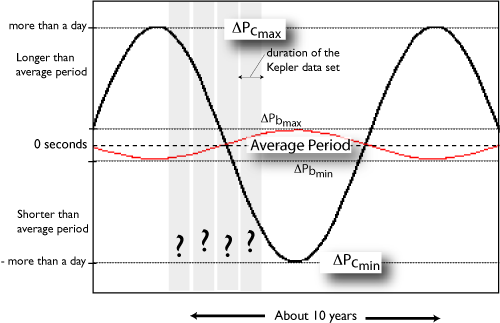Photo credit: Bill Lowenburg — From the Crash Burn Love Project
I sure enjoyed that article on Figure-Eight racing in last Sunday’s New York Times. The piece is a shameless sop, of course, to the smug ironic-hipster segment of the NYT readership — not unlike twelve-packs of Pabst Blue Ribbon stacked up in front of the checkout counter at Whole Foods — but it’s also a great story. The racers adhere to a pure recession-era hellenic ideal, risking life and limb for glory, complete with six-time world champion Bob Dossey channeling a latter-day wrath of Achilles.
And the exoplanet connection? Orbital mean-motion resonances with large libration widths bring to mind a smoothly-running Figure-Eight race. The planets roar around the parent star, continually missing each other at the intersections of their crossing orbits. Here’s an animation of the HD 128311 2:1 resonant pair, strobed over several hundred orbits.
(Animation was causing the site to slow down, so I took it down.)
To date, several such systems are known. In addition to HD 128311 b and c, a similar state of affairs also seems to hold in the HD 82943 and HD 73526 systems, both of which appear to harbor planets in 2:1 mean motion resonance with large libration widths. For all three of these systems, however, the degree of confidence that the correct dynamical configuration has been identified is somewhat less-than-satisfying. Rather than directly observing the resonant dynamics, one notes in each case that a whole bundle of model systems can be constructed which fit the radial velocity data. Within these large sets of allowed configurations, the ones that are dynamically stable over time scales of order the stellar lifetime tend to have large libration widths.
By contrast, Gliese 876 — the one system for which the radial velocity solution provides direct and unambiguous access to the resonant configuration — has its two largest planets lying very deeply in 2:1 resonance, and the libration width is just a few degrees. It bothers me that Gliese 876 seems to be so qualitatively different. It’s easy to wonder whether there might be an error of interpretation for the indirectly characterized systems.
Resonance libration widths are more than just a curiosity. They provide a record of the conditions that likely existed in the protostellar disks from which the planets formed. A turbulent disk produces transient density fluctuations that cause the libration width of a resonant pair of planets to undergo a random walk, much as a stochastically driven pendulum will, on average, tend to gradually increase the height of its swing. The plot below (which comes from a 2008 ApJ paper written with Fred Adams and Anthony Bloch) shows the results of five individual simulations in which gravitational perturbations mimicking those arising from disk turbulence are applied to integrations of the Gliese 876 A-b-c system. In each case, the libration width of the resonant argument tends to increase with time. Perhaps the Gliese 876 system was very lucky, and despite being buffeted managed to end up with a tiny swing. More likely, the gas flow in Gliese 876’s disk was relatively calm and laminar.
Until now, almost everything we know about extrasolar planets in resonance has come from the radial velocity surveys. This year, Kepler is also starting to contribute, with the announcement of a new system — Kepler 9 — which exhibits detectable transit timing variations. The planets orbiting Kepler 9 were announced with media fanfare during the recent Haute Provence meeting, and a detailed article (Holman et al. 2010) will soon be published in Science. The Kepler 9 set-up is oddly reminiscent of Gliese 876. Two Saturn-sized (and somewhat less than Saturn-mass) planets orbit with periods currently in the vicinity of 19 and 39 days. Further in, an unfortunate super-Earth is stuck is a blistering 1.6-day orbit. Here are the orbits drawn to scale.
The planetary and stellar radii are not to scale, but rather, are sized to conform to the NASA press release artist’s impression of the system…
Kepler 9’s orbital geometry represents quite an extraordinary draw! All three planets can be observed in transit, and the strong gravitational interactions between the two outer planets lead to large deviations from strict periodicity. Indeed, the system is simultaneously tantalizing and maddening. The parent star is many times fainter than Gliese 876, meaning that it will be difficult to get a large collection of high-quality radial velocity measurements. In order to really characterize the dynamics of the system, it will be necessary to lean hard on transit timing measurements. The observations published in the Science article have a low per-point timing cadence; skilled amateur observers can obtain timing measurements that have higher precision and which significantly extend the time baseline, and so the system presents an excellent opportunity for small telescopes to obtain cutting-edge results. The parent star (in Lyra) is still up in the Northern Hemisphere’s evening sky, and there are transits coming up!
During the time that Kepler monitored the system last year, the orbit of the outer planet, “c” (P~38.9 d) was observed to be steadily decreasing by 39 minutes per orbit, and the orbital period of the inner planet, “b” (P~19.2 d) was increasing by 4 minutes per orbit. Clearly, this state of affairs can’t continue indefinitely. If the system is in a 2:1 mean motion resonance, then over the long term, the periods of the two planets will oscillate around well-defined average values. The Kepler measurements strobed the system over a relatively small fraction of its overall cycle. An analysis of the planetary disturbing function (in which all but the most significant terms get thrown out) indicates that the libration time should be of order the orbital timescale (40 days) multiplied by the square root of the planets-to-star mass ratio (~100), or about ten years.
We don’t know exactly which part of the cycle Kepler dropped in on, and so the second derivative (rate of change of the rate of change) of the period could be either positive or negative. This means that there is a significant uncertainty on when the next transits will occur, but it also means that accurate measurements will immediately give a much better idea of what is going on.
The next opportunities will occur on October 5th (for 9c) and October 8th (for 9b). As always, observers should use the TRESCA website to double-check observing details and to submit light curves after the observations have been made. As the dates approach, I’ll post specific details for small-telescope observers — it will take a global effort to ensure that definitive observations are made. We’ll also soon be releasing an updated version of the systemic console that will allow for the modeling of TTVs in double-transit systems.





Pingback: Tweets that mention systemic » Shaken not stirred -- Topsy.com
Out of curiosity, what programme was used to create the animation of the HD 128311 system?
I used my own integrator to integrate the orbits, and then produced the individual frames using IDL. I then converted the sting of .gif files into a .mpeg animation using imovie.
Some BIG caution is needed when trying to observe the Kepler-9 planets. First off, the TRESCA website doesn’t appear to take into account even the quadratic part of the transit timing variation. Second, even if this is taken into account, as is pointed out in this post, the quadratic part cannot be continued forever and we don’t know when it will start to fail. These together lead to a several hour uncertainty in when transits are happening in October. Cutting edge science could be done, yes, but at the expense of having to cover about half a day at least around the nominal times. Adding in the fact that Kepler will be observing the same system at the same time makes the prospect less compelling, in my mind. Other Kepler related observing projects are much more interesting.
The TRESCA database does take the quadratic part of the ephemeris into account. Furthermore, the uncertainty in the ephemeris is no worse than for cases such as HD 17156b, for which successful detections were made by amateurs. I think it’s quite feasible to mount a global campaign on this target with small-telescope observers. And the fact that Kepler observes the same system at the same time provides a great mechanism for eventual confirmation of any ground-based results and analyses that emerge…
The embedded video in this post (I think) keeps causing errors (and sometimes crashes) in firefox, every time I load your webpage! Just thought I’d let you know.
I’ve had the same problems with firefox, but assumed the problem was at my end. I’ve tried logging in on another PC, which is a little better, but there still seem to be some problems.
Inspiring article!
Talking of weird resonances, what do you make of the recent suggestion that Nu Octantis has a planet in a retrograde resonance with the binary star orbit? Unfortunately I haven’t been able to take a look at the paper because it is behind a paywall.
Could you post about your analysis of the Gliese 581 system, given the recent news? Specifically, what is your opinion, as you look at the data, on whether 581g exists or not?
Is this blog still active?